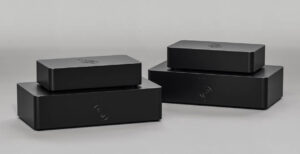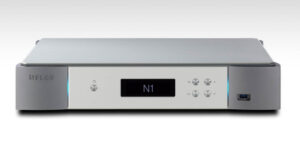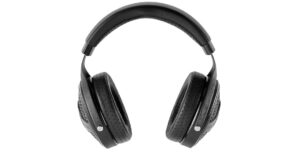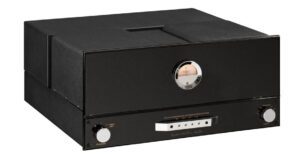
Back in March this year, the Hi-Fi+ listening room was given the Synergistic treatment. Ted Denney of Synergistic Research flew over for a few days to walk us through a range of the company’s system enhancement devices, from mild to wild. We thought this was the kind of thing that could be summed up in a few pages.
Wrong!
First, though, a polite suggestion: if you are deeply committed to the audio objectivist cause, look away now! A lot of what transpires over this and subsequent features follows so different an epistemic foundation to your world view, all this will do is upset and aggravate you. Because the stakes are so low (to the best of my knowledge, no one has died of too much – or too little – Synergistic Research treatment), heated battles over observational methodology are as inevitable as they are unwelcome.
Nevertheless, we’ll start at what is possibly the least contentious – and newest – aspect of the whole Synergistic approach: UEF, or Unified Energy Field, technology panels and treatment pads, the HFT (high-frequency transducer) dots, and the Black Box bass control. All of these are entirely passive treatments designed to be placed in specific positions around the listening room (or in the case of the HFT, in specific locations on your loudspeaker). These panels and dots are designed to enhance the performance of a system, and not replace any component or room treatment. In a previous iteration (before the UEF equipment rolled out), the HFT dots were also placed around the room in the same proscribed locations now used by the UEF pads and panels, but now they are specifically used on the loudspeaker; they have a similar effect, but the new UEF dots are coin sized and easier to affix to a wall, while the HFT dots are more like tiny cylinders, blu-tacked to the speaker and stand proud by about half an inch.

The UEF panels (roughly the size of an A4 picture frame) are first up. The first sits on the rear wall behind and exactly between the loudspeakers, half way up the wall. If the system is set equidistant in the room that means placing the panel dead centre of the wall behind the loudspeakers, then follow the same plan on the wall behind your ears, and then on the side walls. In a larger room, or with electrostatic panel loudspeakers, more UEF panels are required, typically in the corners of the room; our room was fine with four panels, but depending on size and construction, as many as ten could be used. It’s wise to listen to the system before and immediately after installing these UEF panels. The difference is marked, significantly increasing definition, precision, soundstage size, and overall focus. The room seems calmer, too, more like ‘the peacefulness of the great outdoors’ than ‘we just turned the air-conditioner off’.
Now come the UEF pads. These also fit in predetermined positions in the room, although there is more scope for fine-tuning within these positions to find the optimum position for the best possible sound. These work with the larger panels to accurately focus the soundstage in the room, while also reducing the influence of some of the room’s more inglorious effects. These work along the walls and ceiling and you can quickly rack up dozens of coin-sized pads around the room. They even work on cable terminals! Fortunately, they are some of the least obtrusive performance enhancers in the audio business, so they pass domestic criteria unscathed. Once again, as with the UEF panels, the effect of this treatment is to simply improve the overall performance of the system in consistent ways; the bass gets tauter, the midrange more distinct, and the top end has more clarity and precision. Vocals step out from the mix and are more articulate. It’s like taking your system and bringing out the best in it. What’s really surprising is just how much it improves even a modest system – we had a good system (Lyngdorf CD transport into a Nagra HD DAC and SST Son of Ampzilla II power amplifier) with fairly good ProAc Response floorstanders and by the end of the session, they were sounding an order of magnitude better than they did at the start.
Now to the HFTs. These little metal cylinders are used next to transducers and ports on your loudspeakers, as well as one dot along the mid-section of any length of the loudspeaker cabinet. So, you will likely end up with one HFT close to any driver, one near any rear port, and one each on the side and top faces of each loudspeaker. And listen again, and once more the sound is just more realistic and ‘there’ in the room. Some major headscratching will take place at this point, because you start to realise just how far you’ve pushed your already good system, and you start wondering just how deep this rabbit hole goes.
This treatment system has proved popular with some studio engineers, who use it in tandem with lots of acoustic treatment to improve the resolution in the studio and control room. It’s more of a backroom thing, but one that has contributed to the quality of Grammy winning studios and recording engineers.

The difficulty with this kind of equipment is not explaining the end result – that’s actually the simple part; it makes your system sound better in specific and predictable ways described above. The problem comes with explaining ‘how’ and ‘why’ it does what it does. The pads look like they have a sandwich construction, with a sticky plastic back, a fabric covering, and some kind of darker material that constitutes the UEF ‘stuff’. The HFT dots look like little aluminium cylinders with a cone shaped space at the top of the cylinder. The UEF panels look like black picture frames where someone forgot the picture. That’s all fine. What they do is work on frequencies beyond human hearing and energy fields beyond our perception, which echo back into the purview of our relatively limited sensorium. How they do that is one of Synergistic’s trade secrets.
Note that although we have added panels, pads, and dots around the room, and now on the loudspeakers and speaker terminals, everything thus far has been a passive treatment, and has no direct electrical interaction with the system itself. And there is still one more step to make before we begin to go down that route (which will be the subject of a ‘Part 2’ for a future issue). Now we introduce… the Black Box.
This, as the name suggests, is a black box sitting on three spikes designed to sit in between and just in front of your loudspeakers, at least a metre from the rear wall. It has no active components so there are no plugs or batteries. According to Denney, this is a low frequency stabiliser in a resonator array designed to solve bass node issues, although by conventional acoustics models, the device needed to successfully achieve this goal would be about 20 times larger.
Conventional acoustics be damned, this thing works! The bass is less wayward, with bass notes having a distinct beginning, middle, and end, and a level of pitch precision that simply wasn’t there before. Despite a loudspeaker that – although very good – is not a full-range design in the high-end sense, it developed the sort of low-end authority and credibility that normally only comes with full-range loudspeakers. But perhaps more importantly, this brought the bottom end into line with the effects the UEF and HFT materials had on the mid and upper registers. Suddenly, the Synergistic name didn’t sound so far-fetched; there was a synergy across the frequency range that rarely happens in audio unless the system is extremely well sorted.
These tuning systems seem universal in their benefit, something they have in common with conventional room treatment, but that tying everything together is something that usually only happens with very well sorted audiophile equipment, or paradoxically very cheap audio systems that don’t get in the way of the music. That Synergistic is bringing the system up to the mark is well worth seeking out.

Our next step is to cross the threshold into the active domain, with Synergistic’s Tranquillity Base active platforms, grounding, Atmosphere systems, tuning blocks, and the big ‘reveal’ regarding prices. To be continued…
Contact details
Synergistic Research, Inc.
URL: www.synergisticresearch.com
Tel: Within the United States: +1 (800) 578-6489
Outside the United States: +1 (949) 476-0000
Distributed in the UK by: Electromod
URL: www.electromod.co.uk
Tel: +44 (0)1494 956558
Tags: FEATURED
By Alan Sircom
More articles from this authorRead Next From Review
See all
Reiki Audio SuperSwitch Master Pro + Servant Pro
- Mar 27, 2024

Melco Audio N1-S38 music server
- Mar 27, 2024

Focal Utopia 2022 headphones
- Mar 27, 2024











